ConceptSpeak™ (Part 3): Verb Concepts in Concept Models
Speaking the Language of the Business with Concept Models
A concept model comprises a set of concepts and the structural relations between those concepts. ConceptSpeak™ is a comprehensive and carefully-coordinated set of guidelines and techniques for designing a concept model.[1] The conventions of ConceptSpeak follow the Object Management Group's (OMG's) Semantics of Business Vocabulary and Business Rules (SBVR).[2] In this in-depth series, Ron Ross presents ConceptSpeak's highly-disciplined approach for creating concept models based on well-defined elements of structure.
Unlike the pre-defined semantic constructs discussed in the previous part of this series[3] the business meaning of verb concepts lies completely with the wordings supplied for them by business workers and business analysts. These verb concepts have no implicit or prefabricated meaning of any kind; they represent no deeper semantics. They are business-defined add-ons, custom elements of structure.
Suppose you say "A person steals a car." That doesn't mean the person owns the car or leases the car or drives the car or anything else. It means a person steals a car. When you use the verb steals in a sentence in connection with person and car, you'll mean exactly steals.
Verb concepts are fundamental to communicating business knowledge. Look at it this way. Without verb concepts, you can't compose sentences. And without sentences, many kinds of business knowledge simply can't be expressed. Concept models put verb concepts centerstage.
Eliminating Ambiguity
Let me tell you something we have learned from our work on business rules. A leading cause of ambiguity in expressing business rules — and other business communications — is missing verbs. Let me illustrate. I'll use a business rule, but the same problem can occur for any kind of business communication.
Business Rule: An order must not be shipped if the outstanding balance exceeds credit authorization.
On a quick first reading the sentence might seem clear enough. As you look closer, however, the meaning becomes murky. Some important connections are missing or hidden from view. Exactly what does outstanding balance pertain to? How about credit authorization? Are other connections missing needed to interpret the rule correctly?

Figure 1. What connections are needed?
Ask, for example:
The outstanding balance of what? …order?
or perhaps …shipment? …customer? …account? …something else altogether?The credit authorization of what? …order?
or perhaps …shipment? …customer? …account? …something else altogether?
To disambiguate the sentence, wordings for relevant verb concepts need to be included. Suppose the following wordings have been included in your concept model:
account has outstanding balance
customer has credit authorization
customer holds account
customer places order
Visually you can now confirm the connections needed for complete understanding of the rule.
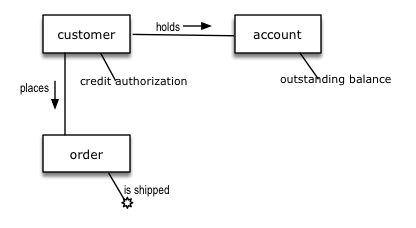
Figure 2. Complete understanding of the rule is represented.
Working the wordings into the sentence to eliminate the ambiguities, the business rule can now be restated as:
Revised Business Rule: An order must not be shipped if the outstanding balance of the account held by the customer that placed the order exceeds the credit authorization of the customer.
Although the resulting statement is a bit wordier, it is far less likely to be misunderstood, misapplied, or mis-implemented; the sentence has now been disambiguated. It makes deep sense, sufficient for formal and computational communication. This example illustrates why verb concepts are so fundamental in concept models — verb-ish things need to be included alongside noun-ish things.
Before digging deeper into the how-to of avoiding such ambiguity, let me make two quick clarifications.
Verb: For convenience, I say verb although I really mean verb or verb phrase. For example, 'owns' counts as a verb, but in my usage so too do 'rides in' and 'is being actively marketed'.
Verb Concept: A verb concept is always understood to include some relevant noun concept(s) as well as something verb-ish. So the verb 'steals' is included in the wording of the verb concept 'person steals car' along with the nouns 'person' and 'car'.
Verb Concepts and Wordings
Experts in the field of linguistics emphasize the importance of verbs. Steven Pinker writes, "A verb, then, is not just a word that refers to an action or state but the chassis of a sentence. It is a framework with receptacles for the other parts to be bolted onto."[4] Without verbs, literally there are no sentences. And sentences are how we all communicate effectively.
Let's say your business needs to communicate about people and vehicles — perhaps it's running a state vehicle registration agency or an insurance business. What ideas (sentences) might you want to express? Here are some examples.
- A person either owns a given vehicle or leases it, never both (at a point in time).
- A person cannot steal a vehicle owned by that same person.
- A person need not own or lease a vehicle to drive it.
These sentences include four basic verbs: to own, to lease, to steal, and to drive. In English, each verb can take different forms (e.g., to own, owns, and owned), but beneath all these forms (which can be called verb symbols), there is only a single idea, the meaning of the verb.
In creating a concept model, we're not interested in verbs or verb symbols on their own, but rather how they are structurally related with noun concepts. The three sentences above, for example, are based on four distinct ways in which people and vehicles relate, namely:
- person owns vehicle
- person leases vehicle
- person drives vehicle
- person steals vehicle
These expressions are called wordings, and their underlying meanings verb concepts. How does a wording differ from a verb concept? The verb concept is the underlying idea or notion; the wording is how you express that idea or notion as a phrase in a sentence. Verb concepts are in your mind; wordings are needed to communicate about them with other people.[5]
Binary Verb Concepts
A verb concept that involves exactly two noun concepts in this way is termed a 'binary verb concept'. Each of the verb concepts above is binary.[6] The wordings for these verb concepts can be diagrammed as in Figure 3.
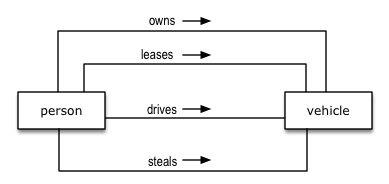
Figure 3. Concept model diagram showing multiple connections between 'person' and 'vehicle'.
In a concept model diagram, the verb symbol of each wording appears close to the line, along with a small directional arrow pointing away from one of the noun concepts. The directional arrow indicates how to 'read' the wording. For example, in the case of owns, the proper 'reading' is person owns vehicle, not vehicle owns person. Vehicle owns person would mean something altogether different(!).[7]
Note on ConceptSpeak Notation
On a concept model diagram, each verb concept is represented by a thin line that indicates what noun concepts pertain to that verb concept. All four of the particular verb concepts above connect to person and vehicle. Because the meanings of the four verb concepts are distinct, the lines are not combined or linked in any way. Showing which noun concepts pertain to a verb concept is the only purpose of a thin line connection. Such a line has no deeper implications.
Unary Verb Concepts
So far, the examples of verb concepts have been binary in that they involve exactly two noun concepts. Verb concepts can also be unary — that is, involve only a single noun concept.
A unary verb concept generally expresses a condition or qualification that is either true or false. Consider the following sentence (a business rule):
Business Rule: A briefing may be only for a product that is being actively marketed.
The verb phrase is being actively marketed in this statement pertains only to one noun concept, product. The wording product is being actively marketed therefore expresses a unary verb concept. For any given instance of product it will either be true or false — the product either is or is not being actively marketed.[8] For example, the product widget might be actively marketed, while the product doodad is not.
Figure 4 illustrates how this unary verb concept would appear in a concept model diagram.
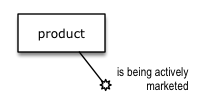
Figure 4. Concept model diagram showing a unary verb concept.
Note on ConceptSpeak™ Notation
The starburst symbol on a concept model diagram always indicates verb concept. Unary concepts are one important use; we will examine more later. The symbol could be used for binary verb concepts too, but it is usually omitted since interpretation of their lines is straightforward.
Conditions and qualifications like these abound in expressions of business knowledge.[9] Standardizing wordings of this kind that your business uses frequently can greatly improve the overall consistency and clarity of business communication. The wording product is being actively marketed, for example, could appear in many dozens or hundreds of different sentences. Consistent usage is a big step in avoiding ambiguity and miscommunication.
N-ary Verb Concepts
The central verb concepts of a concept model are typically binary; that is, they relate exactly two noun concepts. Unary verb concepts are also abundant, depending on how deeply the concept model addresses conditions and qualifications. Less frequently, verb concepts will involve more than two noun concepts. Such verb concepts are said to be n-ary.
For example, suppose a company builds and markets complex products. Owing to the products' costs and complexity, a sales agent is often briefed about a given product by an experienced engineer. These briefings are selective rather than collective — a specific engineer briefs a specific sales agent about a specific product.
This 3-way verb concept can be worded engineer briefs sales agent about product.[10] Alternatively, it can be worded sales agent is briefed about product by engineer. (The two wordings are synonymous.) Figure 5 illustrates how this n-ary verb concept can be diagrammed.
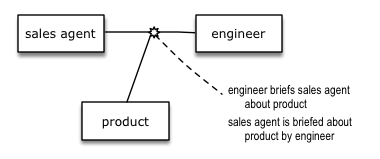
Figure 5. Concept model diagram of wordings for an n-ary verb concept.
Note on ConceptSpeak Notation
Again, the starburst symbol in the concept model diagram indicates verb concept. The starburst also provides a point of reference for expressing the wording(s) of an n-ary verb concept.
N-ary verb concepts are sometimes objectified (named with a noun). For example, the verb concept in Figure 5 might be called briefing. We'll look at objectification in the next part of this series.
References / Notes
[1] Extracted from Business Knowledge Blueprints: Enabling Your Data to Speak the Language of the Business, by Ronald G. Ross, 2020.
http://brsolutions.com/business-knowledge-blueprints.html![]()
[2] Refer to the SBVR Insider section of BRCommunity.com for more information about SBVR. SBVR was initially published in January 2008 by the Object Management Group (OMG). Its central goal is to enable the full semantics of business communication (including business rules) to be captured, encoded, analyzed for anomalies, and transferred
between machines.![]()
[3] Ronald G. Ross , "ConceptSpeak™ (Part 2): Special-Purpose Elements of Structure for Concept Models," Business Rules Journal, Vol. 22, No. 2, (Feb. 2021)
URL: http://www.brcommunity.com/a2021/c058.html![]()
[4] Steven Pinker, The Stuff of Thought: Language as a Window into Human Nature, New York, NY, Viking, p. 31.![]()
[5] It's not 100% accurate to say that a wording is to a verb concept exactly as a term is to a noun concept, but it's close enough that probably no one but a logician or linguistics professor would
call you on it. ![]()
[6] Can you use the same noun at each end of a binary verb concept? Yes. For example, consider the
verb concept person marries person. ![]()
[7] For an in-depth discussion about of the directionality of wordings, see Business Knowledge Blueprints (op cit), pp. 139-141. ![]()
[8] Verb concepts can have instances just like noun concepts. And like instances of noun concepts, instances of verb concepts are always in the real world (universe of discourse) — not in some
database or file. For more on the topic of instances of verb concepts, see Business Knowledge Blueprints (op cit), pp. 142-144. ![]()
[9] Unary verb concepts are also highly useful in expressing
knowledge about the state of things. For example, a unary verb
concept might indicate whether an employee is active. Or whether
an alert is discontinued. An order might be received, filled, shipped,
cancelled, etc. States of things will also be examined in the next part of this series.![]()
[10] The 3-way verb concept engineer briefs sales agent about product cannot be reduced to two binary verb concepts because briefings
(as described) are selective rather than collective — a specific engineer briefs a specific sales agent about a specific product. To break the verb concept down farther would lose
meaning. So, the n-ary verb concept 'engineer briefs sales agent about product'
is elementary. For each verb concept that includes two or more
noun concepts, 'elementary' means it is not possible to break
the verb concept down into two or more other verb concepts,
each with fewer noun concepts, without loss of meaning.
For an in-depth discussion about elementary verb concepts, see Business Knowledge Blueprints (op cit), pp. 151-153. ![]()
# # #
About our Contributor:
Online Interactive Training Series
In response to a great many requests, Business Rule Solutions now offers at-a-distance learning options. No travel, no backlogs, no hassles. Same great instructors, but with schedules, content and pricing designed to meet the special needs of busy professionals.


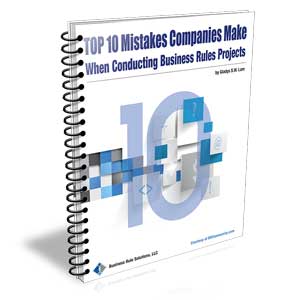







How to Define Business Terms in Plain English: A Primer
How to Use DecisionSpeak™ and Question Charts (Q-Charts™)
Decision Tables - A Primer: How to Use TableSpeak™
Tabulation of Lists in RuleSpeak®: A Primer - Using "The Following" Clause
Business Agility Manifesto
Business Rules Manifesto
Business Motivation Model
Decision Vocabulary
[Download]
[Download]
Semantics of Business Vocabulary and Business Rules